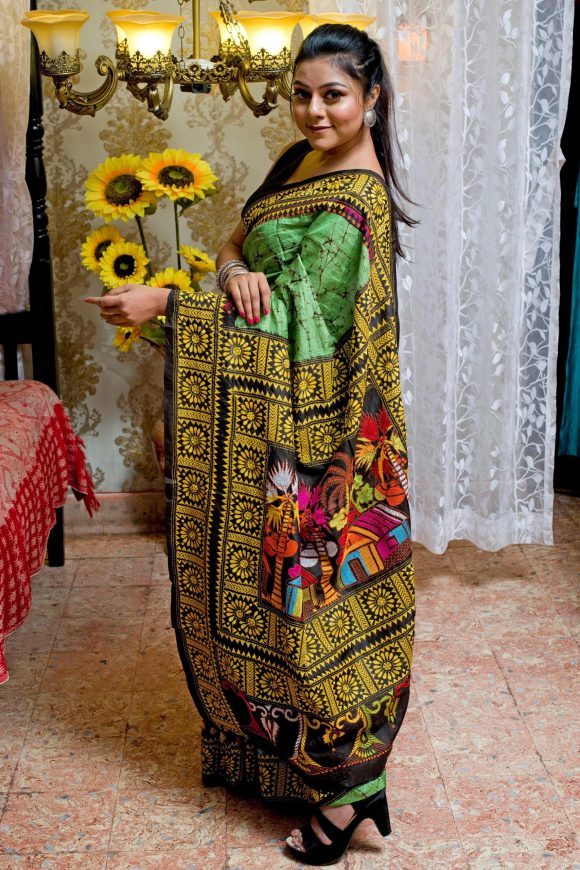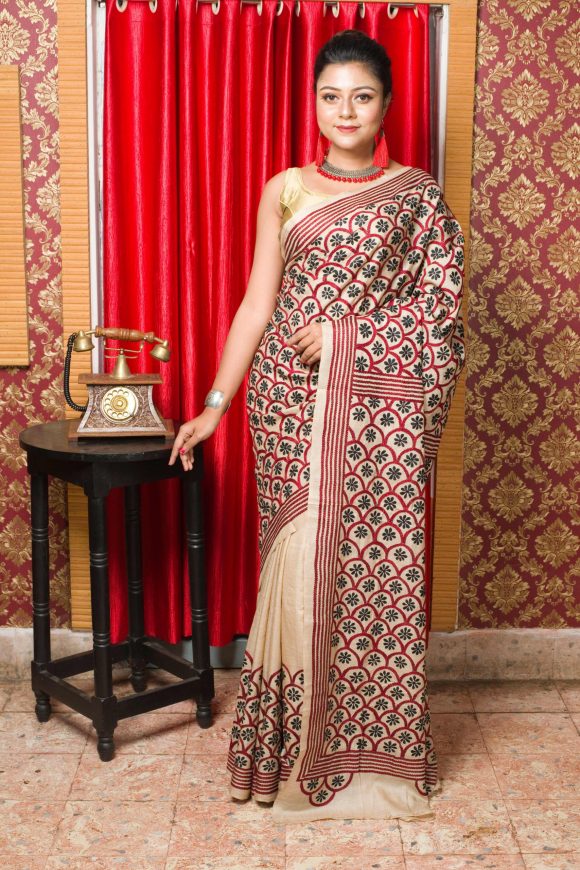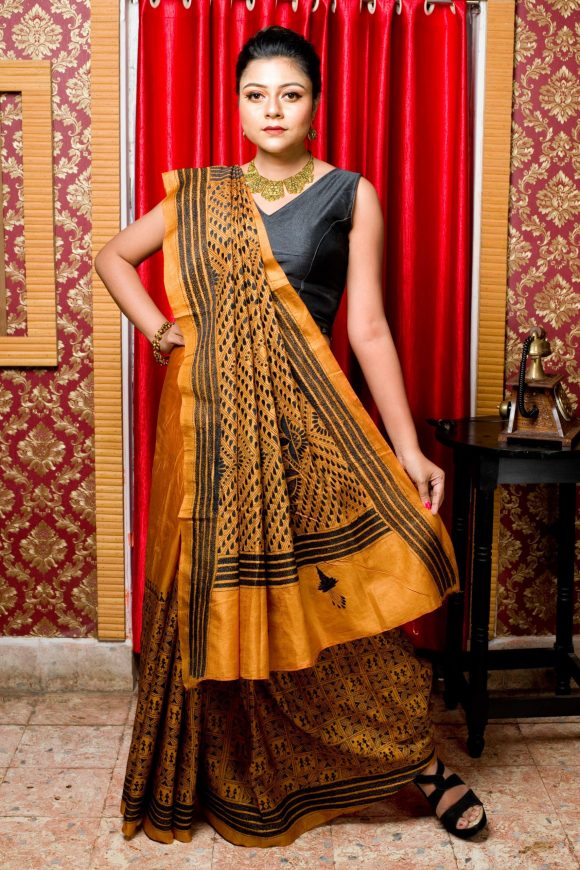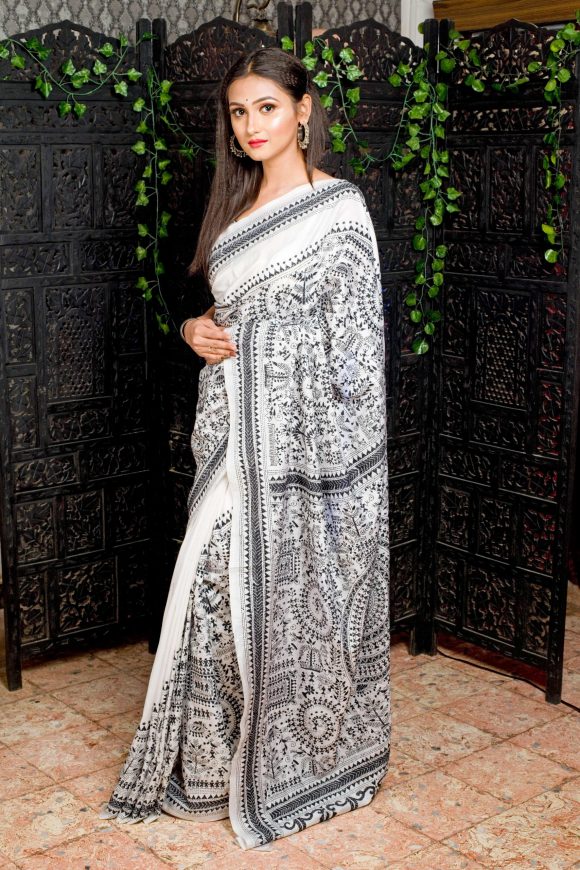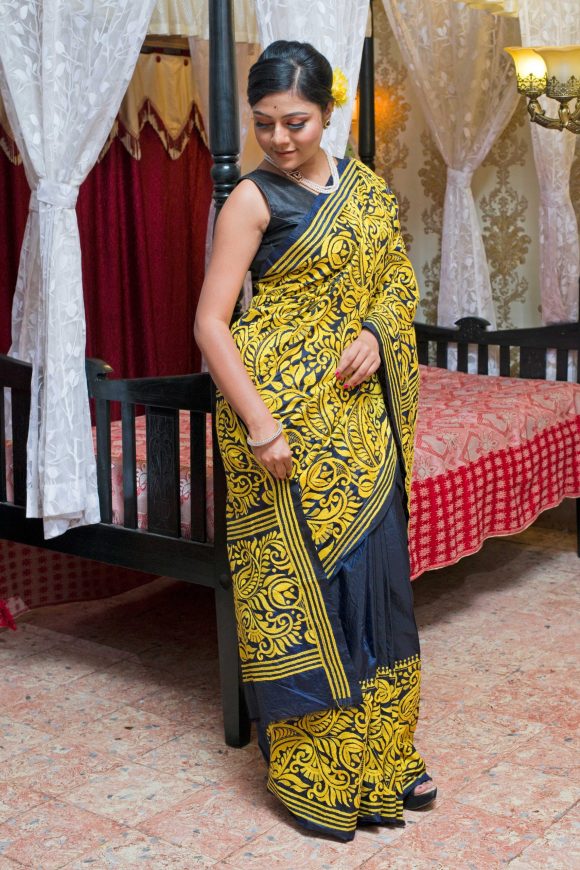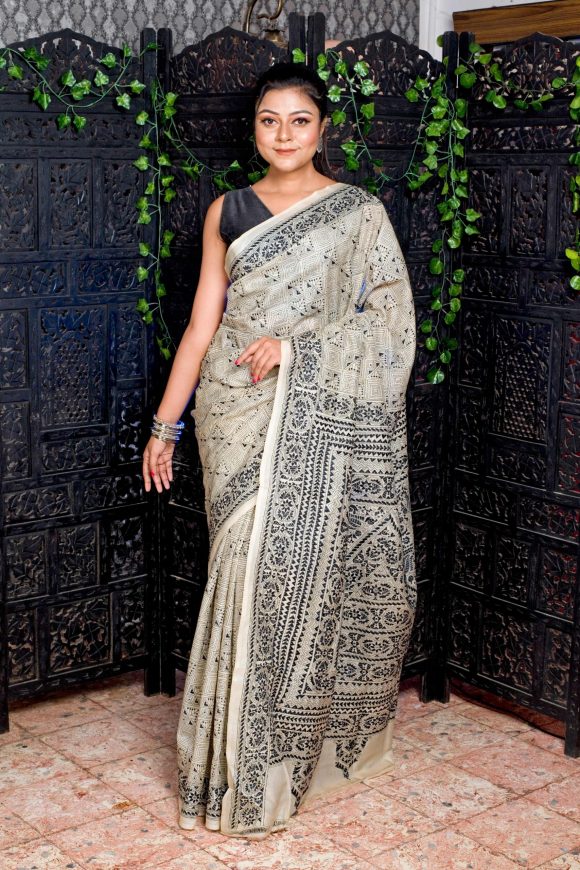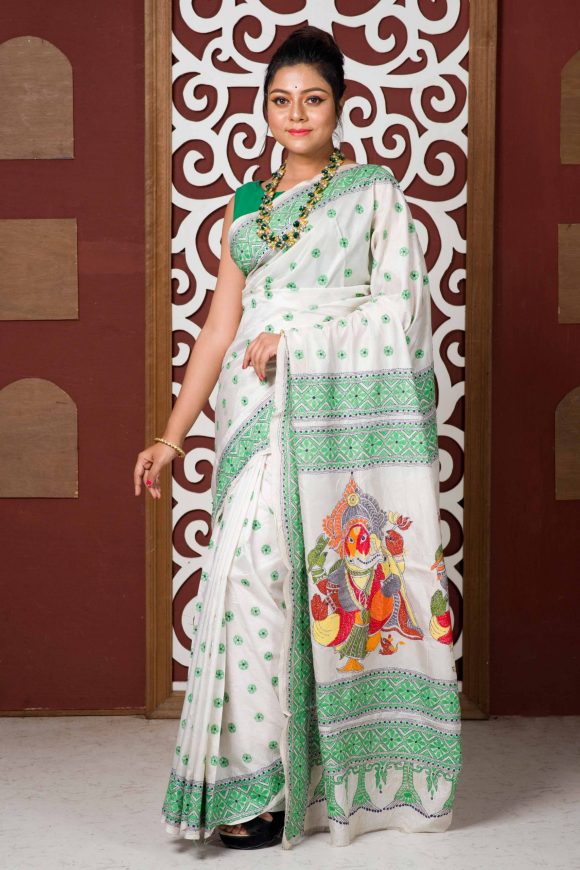Katha Work
Kantha Sarees: Translating Utilitarian Lifestyle into Six yards of Grace
Kantha had a humble beginning in rural parts of Eastern India. What we see today as a saree was once nothing but a deliberate choice of innovation and frugality. Ages ago from now, when recycling was considered “new cool,” Kantha came into existence. It began as a women-centric craft.
Most of us, referring to people in Bengal, Tripura, Orissa, and Bangladesh, have spent childhood wrapped up in Kantha or at least seen it. These pieces of old clothes, joined by a simple stitching pattern, inspired the development of a saree type. Who would have thought a simple art would end up everywhere, starting from our wardrobe to the fashion runways?
How Kantha Entered the Mainstream Market
Katha is basically nothing but embroidered quilt. It never started out as a saree variety. Women in rural Bengal used to layer and stitch multiple pieces of used sarees or dhotis together using colored threads. It created an embroidered pattern. The simple running stitch used for joining clothes came to be known as “Kantha stitch,” and joined old clothes were called “Kantha.” It was a utilitarian item used for swaddling babies and as a floor cover, and coverlet for mildly cold weather. This reflected the outcome of a mindset to recycle and reuse clothes.
However, this art form, originating from Bolpur in the Birbhum district of West Bengal, disappeared in the initial phase of the 19th century. The daughter-in-law of poet Rabindranath Tagore played an indispensable role in reviving Kantha in the 1940s. But, it experienced setbacks during India’s Partition.
Following the Bangladesh Liberation War in 1971, it has emerged as a valuable craft form. This thrifty practice became widespread and reached even the urban parts of society. Eventually, this embroidered pattern of simple running stitches got adopted in saree and ushered in the emergence of Kantha sarees, check our traditional saree collection in Kolkata.
The rural artisan has mastered the art of cutting intricate designs on these sarees using Kantha stitch. With the due course, more detailed embroidery patterns are developed. It takes inspiration from elements of daily life, religion, and art. However, these sarees also contain designs inspired by the lives of the women stitching them. It represents tales of motherhood and marriage.
The art of making these sarees has been passed down through generations spanning centuries. However, Kantha is still in use as a recycled item having diverse uses. Even today, you will find these in the houses of Bengal.
Process of Making Kantha Sarees
Artisans use either silk or cotton threads for making Kantha sarees. They usually use Tussar and Bangalore silk. But, recent times involve making these with three different blends. Like, the body is made using different materials, the pallu with another and border with other types. It adds volume and variation to the feel of its texture.
These sarees have moderate to heavy embroidery work. Threads of one or multiple colors are used to create embroidery on the body, borders, and pallu of the saree. But, usually, lighter threads on dark-colored saree give a preferred contrast.
Even without a very pronounced contrast between stitching thread and saree color, the delicate work on the saree makes it look like a canvas with vibrant artwork. It involves making smaller shapes, flowers, or elements of daily life on its body and borders. On the other hand, the pallu region contains beautifully stitched mythological characters, local flora and fauna, and everyday scenes.
These sarees can have theme-based designs like epic lore. It results in producing exquisite imagery. However, these not only have embroidery on saree materials, but a combination of stitching work on block prints is also available.
How Kantha Sarees lifts up your Saree Game
The intricacy of embroidered patterns gives Kantha sarees a regal look. You can get sarees of this variety with simple designs. Heavily embroidered ones look gorgeous and make up for a stylish look. This gives you the flexibility of choosing Kantha saree for any event, starting from cultural ones to celebrations. Its versatility enables you to incorporate these for both traditional and modern looks.
Also, wearing these is not wearing a piece of cloth. It implies your acknowledgment and respect towards age-old traditions of your region or art form showing a flair for intelligent recycling. Therefore, draping yourself in something like this itself accentuates your personality.
Besides, its materials are great for comfort. The use of Bangalore silk and cotton makes it suitable for wearing during summer. These are lightweight, adding ease to your daily movements. Also, silk adds luster to your outfit and makes you look eye-catching.
How to Take Care of Kantha Sarees
The materials of Kantha sarees are easy to wash and handle. This excludes the need to provide ultimate delicate care. It is suited for daily use. You can opt for its machine wash with delicate settings using a mild detergent. However, you need to follow some guidelines for prolonging the intactness of Kantha sarees.
Like, it’s wise to consider its stitching. Regular rough handling may cause the threads to tear and break the continuity of beautiful embroidered patterns in the saree. So, it’s legit to opt for hand washing of old sarees or the ones with delicate stitching.
Also, you need to stay cautious of the saree color. Colors like Indigo have chances of bleeding and staining other clothes during the wash. Therefore, you need to clean Kantha sarees with these or similar shades separately and with a mild detergent.
Online Collection of Kantha
A saree like this, upholding regional tradition and fine craftsmanship, deserves a place in everyone’s wardrobe, including yours. However, shopping is a delicate yet intense experience that can never be completed in a rush or with a handful of choices. Therefore, to give a unique shopping experience, Ashmi’s Creations have a wide range of Kantha sarees.
It has products having a broader range of colors. From whiter shades to vibrant hues, it has got everyone’s color preferences covered. Also, these contain lighter to heavy embroidery work. The collection features sarees with threadwork in different colors. That many choices suited for any occasion are just a click away from you, choose more unique saree online in Kolkata.

